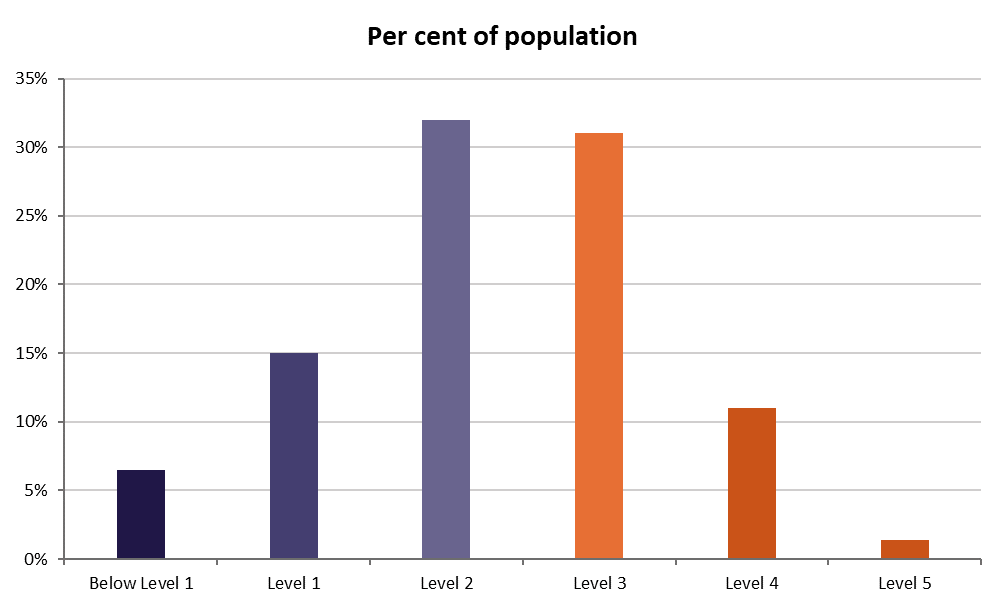The numeracy levels in Australia are slightly lower than the international average. The following results summarise what is shown in the graph below, explaining the number of people who achieved each level of numeracy:
- 6.5 per cent (1.1 million) are below Level 1 – a very low level of numeracy
- 15 per cent (2.5 million) are at Level 1
- 32 per cent (5.4 million) are at Level 2
- 31 per cent (5.2 million) are at Level 3
- 11 per cent (1.8 million) are at Level 4
- 1.4 per cent (230,000) are at Level 5 – the highest level of numeracy.

Source: Programme for the International Assessment of Adult Competencies (PIAAC)
What does PIAAC mean by numeracy?
PIAAC defined literacy as the ability to access, use, interpret and communicate mathematical information and ideas in order to engage in and manage the mathematical demands of a range of situations in adult life. Numeracy involves managing a situation or solving a problem in a real context, by responding to mathematical content and concepts represented in multiple ways.
What do the skill levels mean?
The levels increase in complexity and difficulty, so a Level 1 is very low, while a Level 5 is high. The following is a summary of the skill levels as explained in the PIAAC study.
You can read the full explanations of the skill levels here.
Level 1
Tasks at this level usually require one-step or simple processes involving, for example, counting; sorting; performing basic arithmetic operations; understanding simple percentages such as 50%; locating and identifying elements of simple or common graphical or spatial representations.
Level 2
Tasks at this level tend to require the application of two or more steps or processes involving, for example, calculation with whole numbers and common decimals, percentages and fractions; simple measurement and spatial representation; estimation; interpretation of relatively simple data and statistics in texts, tables and graphs.
Level 3
Tasks at this level require the respondent to understand mathematical information which may be less explicit, embedded in contexts that are not always familiar and represented in more complex ways. Tasks require several steps and may involve the choice of problem solving strategies and relevant processes.
Level 4
Tasks at this level require the respondent to understand a broad range of mathematical information that may be complex, abstract or embedded in unfamiliar contexts. These tasks involve undertaking multiple steps and choosing relevant problem solving strategies and processes.
Level 5
Tasks in this level require the respondent to understand complex representations and abstract and formal mathematical and statistical ideas, possibly embedded in complex texts.









